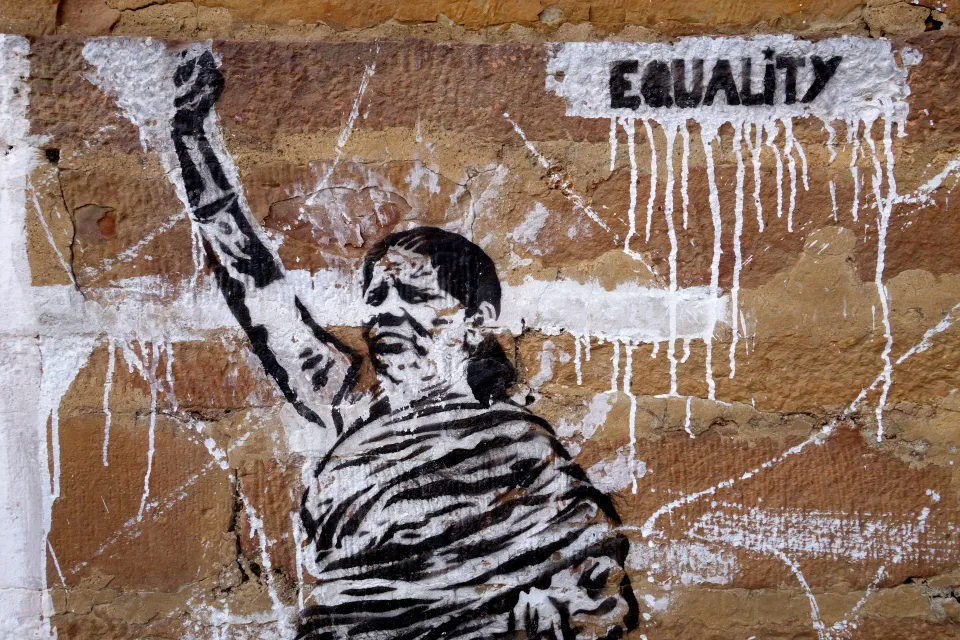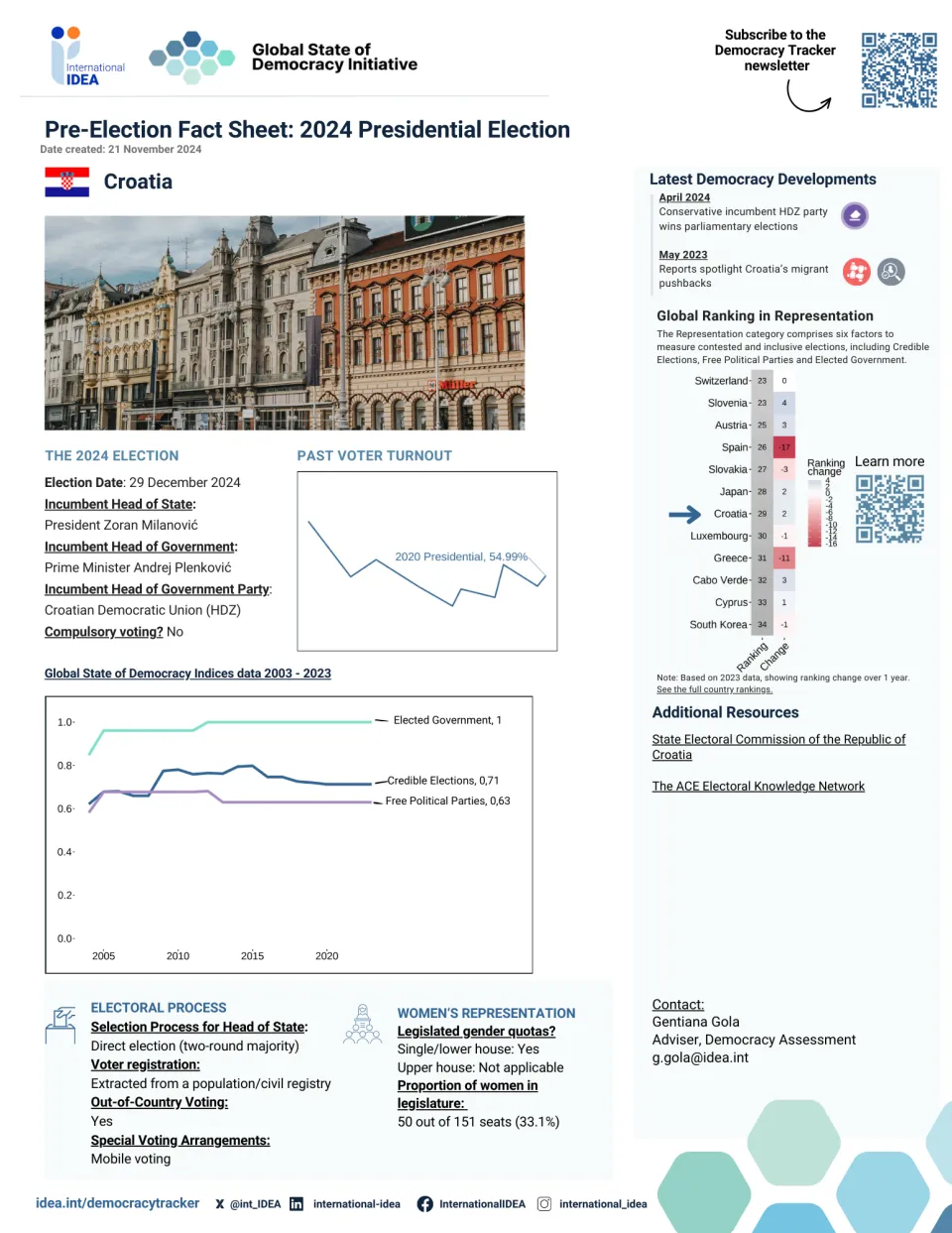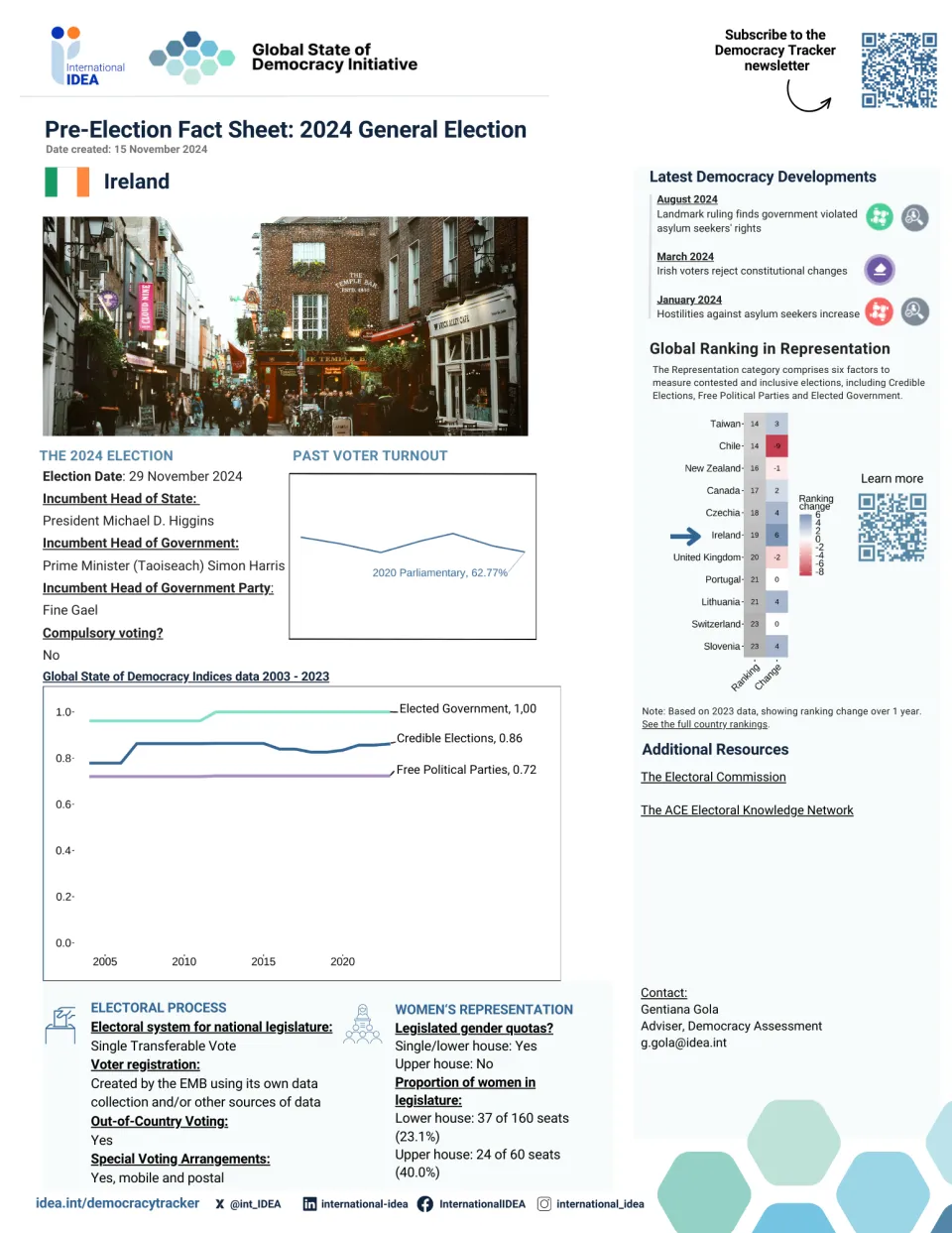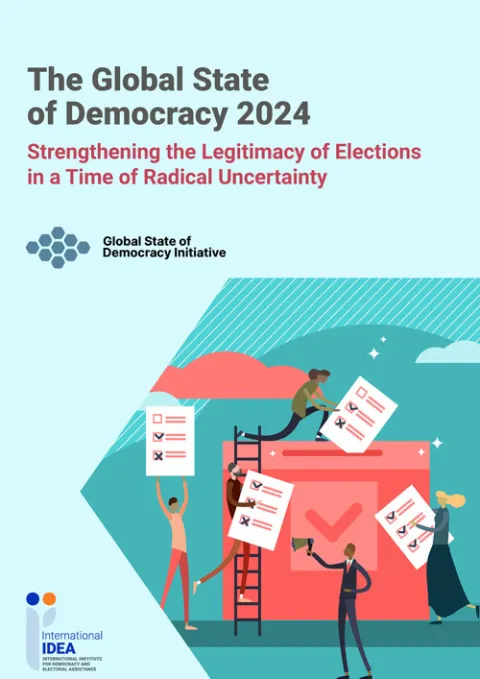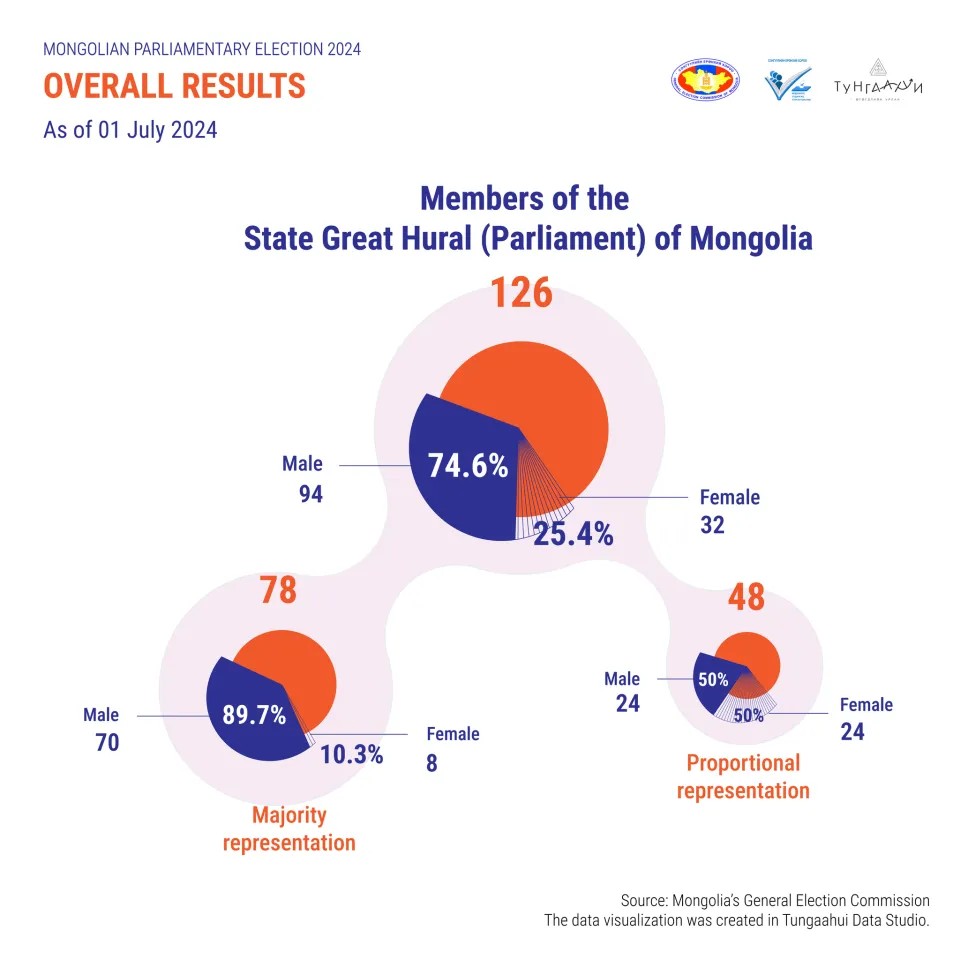The 2024 Global Elections Super-Cycle
on registered voters)
Data not available for parliamentary elections held in Chad and Romania, as well as the general election in the United States.
cast in 74 elections and the European Parliamentary Election
Explore the outcomes of this year's Global Elections Super-Cycle
Coverage of the 2024 Global Elections Super-cycle year has focused for the most part on the candidates and parties that have contested the elections. But elections are fundamentally about the people who vote -- the members of the political community whom the winners of elections represent. In this year-end roundup of this year of elections, we provide data on how many people voted and how the winners of the elections represent those voters.
Pre-election
+1%
Proportion of women in the legislature
The average percentage of women representatives in the lower or single house of the legislature increased by less than one percentage point in 2024, standing at 26.19 per cent among countries that held elections this year. Bhutan and Belarus were among countries with the largest declines in the percentage of seats held by women. The biggest improvements were seen in Mongolia, Jordan, the Dominican Republic and the United Kingdom.
View sourceWithout quota
Change in women's representation
Among countries with legislated gender quotas, women hold an average of 30.28 per cent of the seats in lower or single chambers in 2024, compared to 22.40 per cent among countries without a legislated quota. However, women made up at least 40 per cent of the members of the lower or single chambers of Finland, South Africa and the United Kingdom in 2024 - all countries without gender quotas. A total of 26 countries that held a legislative election in 2024 have a gender quota.
View sourceMongolia
The Mongolian parliamentary election on 28 June 2024 brought a record number of women into parliament, increasing the share of seats held by women by seven percentage points. This follows electoral reforms, including a quota (established in May 2023) requiring that 30 per cent of all candidates be women. The government aims to raise this quota to 40 per cent for the 2028 election.
See country profile
Women's representation and gender equality
Representation in the legislature is only part of the Global State of Democracy's measure of gender equality. This is why Rwanda has the highest representation of women in the legislature in the world, at 63.8 per cent of the seats in the Chamber of Deputies in 2024 but performs only in the mid-range of this measure. Bhutan, Iran and the Maldives are among the countries where women's representation in the legislature is below 5 per cent of the seats in the lower chamber.
View sourceFemale heads of state or government
There are now more female heads of state than there were at the start of the year. Only six countries with elections this year were led by women before going to the polls. Over the year, the number of female heads of state or government rose to nine with the election of President Claudia Sheinbaum in Mexico, President Halla Tómasdóttir in Iceland, and President Gordana Siljanovska-Davkova in North Macedonia. There are no executives identifying as non-binary in 2024. The United States glass ceiling remains unbroken, with Vice President Kamala Harris becoming the second woman to lose a presidential election to Donald Trump.
Alongside women, young people are underrepresented in political institutions in most regions of the world. Heads of state and government are generally older than the average voter, and the gap between the age of the electorate and their representatives is often wide. Despite many opportunities for change in 2024, the average age of elected executives did not change much.
Senegal
Despite many challenges, Senegal's 2024 election was an encouraging example of democratic contestation and generational change. On 24 March 2024, Senegal elected Bassirou Diomaye Faye as the next president; he was the youngest-ever elected president on the African continent at the age of 44, and one of the youngest in the world.
See country profile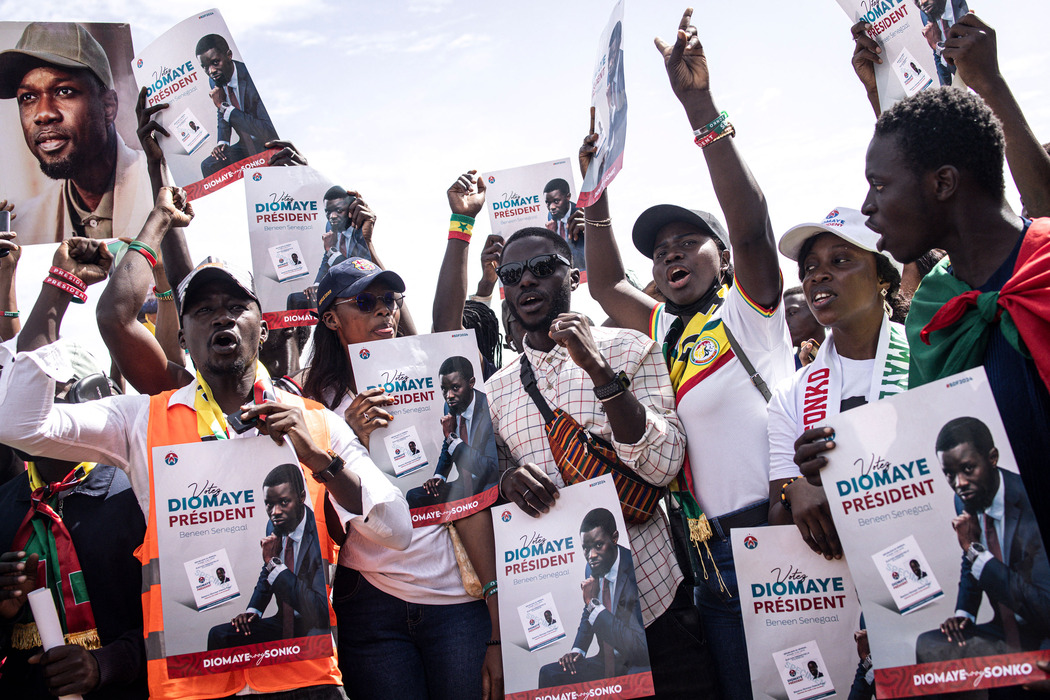
Age of the executive
Around the world, heads of state and government have become slightly younger, with Africa leading the youth movement. Among countries where officeholders could change this year, the average age of executives declined slightly from 61.85 to 60.63. A total of 10 executives under 50 were elected in 2024 and 33.85 per cent of countries elected a younger executive. President Donald Trump of the United States was the oldest executive elected in 2024.
United States
Donald Trump won a decisive victory in the presidential election held on 5 November 2024. According to preliminary results, nearly 143 million Americans cast their ballots in the 2024 election, compared to approximately 155 million in the 2020 election, which saw record voter turnout. While incidents of violence marred the electoral campaign, election day itself was peaceful, and the outcome of the election was widely accepted. Read more on the state of democracy in the United States.
See country profile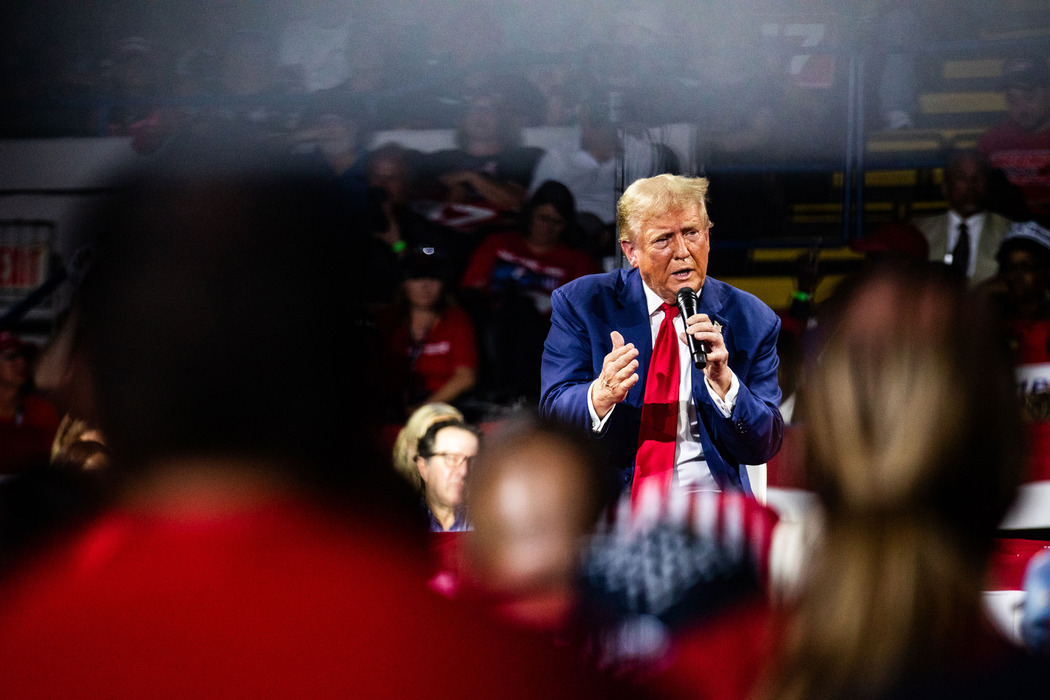
Top 5 most populous countries
holding national elections
Approximately 3 billion people had the opportunity to go to the polls in 2024, a number significantly boosted by the holding of elections in some of the most populous countries in the world.
Botswana
Botswana's general election on 30 October 2024 marked the end of nearly 58 years of uninterrupted rule by the Botswana Democratic Party (BDP) as the opposition coalition Umbrella for Democratic Change (UDC) won a majority of the seats in parliament. President Mokgweetsi Masisi of the BDP graciously conceded defeat, committing to supporting the transition to a UDC government led by Duma Boko.
See country profile
Party Turnover
Party turnover, referring to the change in the party of the executive, was a big story in some countries in 2024. This important indicator of democratic health shows that elections can lead to a shift in political leadership and can reflect political accountability. Around the world, 22 elections resulted in party turnover (33.85 per cent).
Disputed elections
Numerous types of disputes signal discontent or lack of trust in electoral processes. The data below covers contexts marked by boycotts, public rejection of results, violence involving civilian deaths and protests after the election.
Of the 74 elections that took place between 1 January and 31 December 2024, 12 per cent saw opposition boycotts. Bangladesh's main opposition boycotted the 2024 elections, as it had in 2014. This election was later marked by upheaval, as student-led protests in August abruptly ended the ruling party's tenure, with new elections planned in the coming years. Overall, in 15 per cent of 2024 elections a losing party or candidate publicly rejected the results. In 26 per cent of cases, elections were followed by protests, with 18 per cent of elections experiencing violence involving civilian deaths.
Disputed elections per region
There was violence involving civilian deaths in 13 elections in 2024, seven of which occurred in Africa. Of the eleven countries that saw a losing party or candidate reject election results, four occurred in Europe and another four in Africa, respectively. Notably, of the nine countries that saw opposition boycotts, none occurred in the Americas.
Opposition boycott
Loser rejected outcome
Election-related protests
Instances of violence
Multiple forms of dispute
Not disputed
Africa
Americas
Asia and the Pacific
Europe
Western Asia
This website covered elections held between January and December 2024. If you are interested in supporting the continuation of this project in 2025, please reach out to us at globalmonitor@idea.int.
Initiatives
Elections in 2024
| Country | Type | Date |
|---|

